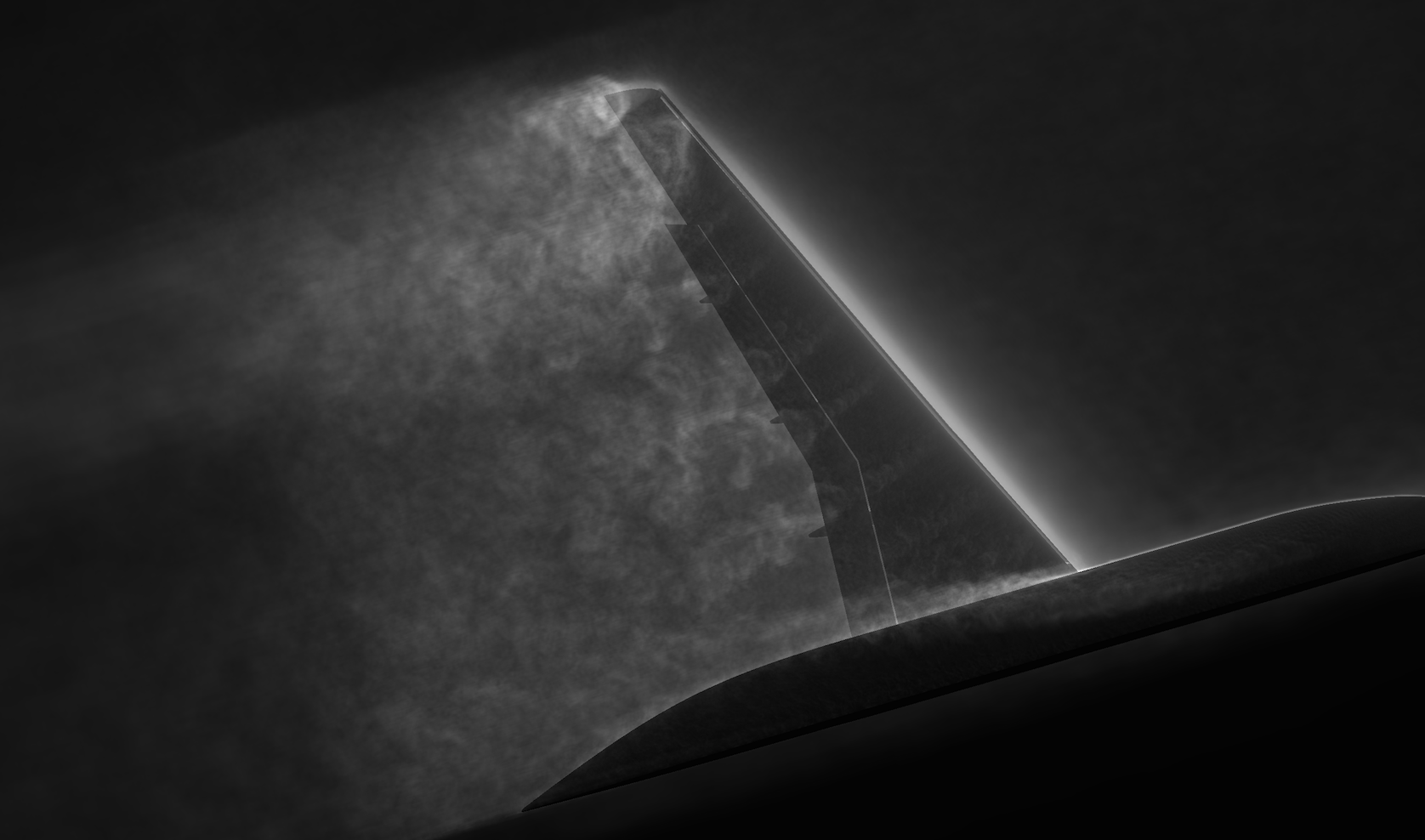For aircraft designers, modeling and wind-tunnel testing one iteration after another consumes time and may inadequately recreate the conditions planes encounter during free flight – especially take-off and landing. “Prototyping that aircraft every time you change something in the design would be infeasible and expensive,” says Parviz Moin, a Stanford University professor of mechanical engineering.
Over the past five years, researchers have explored the use of high-fidelity numerical simulations to predict unsteady airflow and forces such as lift and drag on commercial aircraft, particularly under challenging operating conditions such as takeoff and landing.
Moin has led much of this research as founding director of the Center for Turbulence Research at Stanford. With help from the Department of Energy’s Innovative and Novel Computational Impact on Theory and Experiment (INCITE) grants, he and colleagues at Stanford and nearby Cascade Technologies in Palo Alto, California, have used supercomputing to see whether large-eddy simulation (LES) of commercial aircraft is both cost effective and sufficiently accurate to help designers. They’ve used 240 million core-hours on Mira, the Blue Gene/Q at the Argonne Leadership Computing Facility, a DOE user facility at Argonne National Laboratories, to conduct these simulations. The early results are “very encouraging,” Moin says.
Specifically, Moin and colleagues – including INCITE co-investigators George Park of the University of Pennsylvania and Cascade Technologies’ Sanjeeb Bose, a DOE Computational Science Graduate Fellowship (DOE CSGF) alumnus – study how turbulence affects aircraft during flight. Flow of air about a plane in flight is always turbulent, wherein patches of swirling fluid – eddies – move seemingly at random.
Because it happens on multiple scales, engineers and physicists find aircraft turbulence difficult to describe mathematically. The Navier-Stokes equations are known to govern all flows of engineering interest, Moin explains, including those involving gases and liquids and flows inside or outside a given object. Eddies can be several meters long in the atmosphere but only microns big in the aircraft surface’s vicinity. This means computationally solving the Navier-Stokes equations to describe all the fluid-motion scales would be prohibitively expensive and computationally taxing. For years, engineers have used Reynolds-averaged Navier-Stokes (RANS) equations to predict averaged quantities of engineering interest such as lift and drag forces. RANS equations, however, contain certain modeling assumptions that are not based on first principles, which can result in inaccurate predictions of complex flows.
The speed and accuracy of the computations, Moin notes, have been surprising.
LES, on the other hand, offers a compromise, Moin says, between capturing the spectrum of eddy motions or ignoring them all. With LES, researchers can compute the effect of energy-containing eddies on an aircraft while modeling small-scale motions. Although LES predictions are more accurate than RANS approaches, the computational cost of LES has so far been a barrier to widespread use. But supercomputers and recent algorithm advances have rendered LES computations and specialized variations of them more feasible recently, Moin says.
Eddies get smaller and smaller as they approach a wall – or a surface like an aircraft wing – and capturing these movements has historically been computationally challenging. To avoid these issues, Moin and his colleagues instead model the small-scale near-wall turbulence using a technique they call wall-modeled LES. In wall-modeled LES, the near-wall-eddy effect on the large-scale motions away from the wall are accounted for by a simpler system model.
Moin and his colleagues have used two commercial aircraft models to validate their large-eddy simulation results: NASA’s Common Research Model and the Japan Aerospace Exploration Agency’s (JAXA’s) Standard Model. They’ve studied each at about a dozen operating conditions to see how the simulations agreed with physical measurements in wind tunnels.
These early results show that the large-eddy simulations are capable of predicting quantities of engineering interest resulting from turbulent flow around an aircraft. This proof of concept, Moin says, is the first step. “We can compute these flows without tuning model parameters and predict experimental results. Once we have confidence as we compute many cases, then we can start looking into manipulating the flow using passive or active flow-control strategies.” The speed and accuracy of the computations, Moin notes, have been surprising. Researchers commonly thought the calculations could not have been realized until 2030, he says.
Ultimately, these simulations will help engineers to make protrusions or other modifications of airplane wing surfaces to increase lift during take-off conditions or to design more efficient engines.
Moin is eager to see more engineers use large eddy simulations and supercomputing to study the effect of turbulence on commercial aircraft and other applications.
“The future of aviation is bright and needs more development,” he says. “I think with time – and hopefully it won’t take too long – aerospace engineers will start to see the advantage of these high-fidelity computations in engineering analysis and design.”
